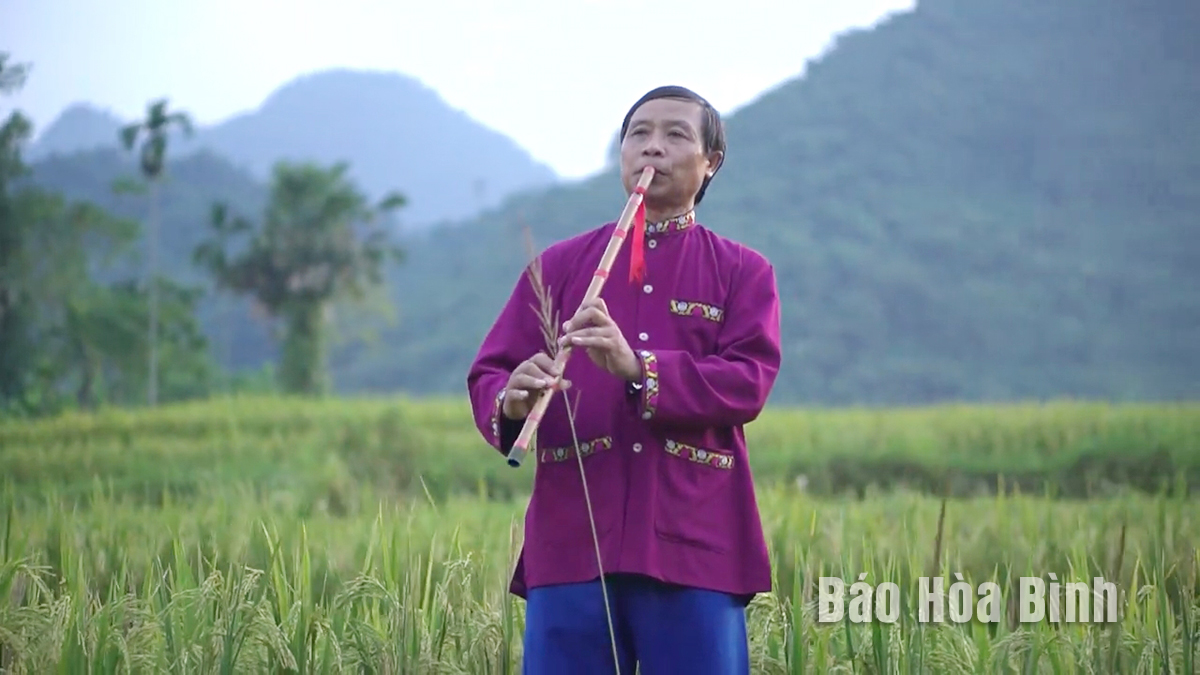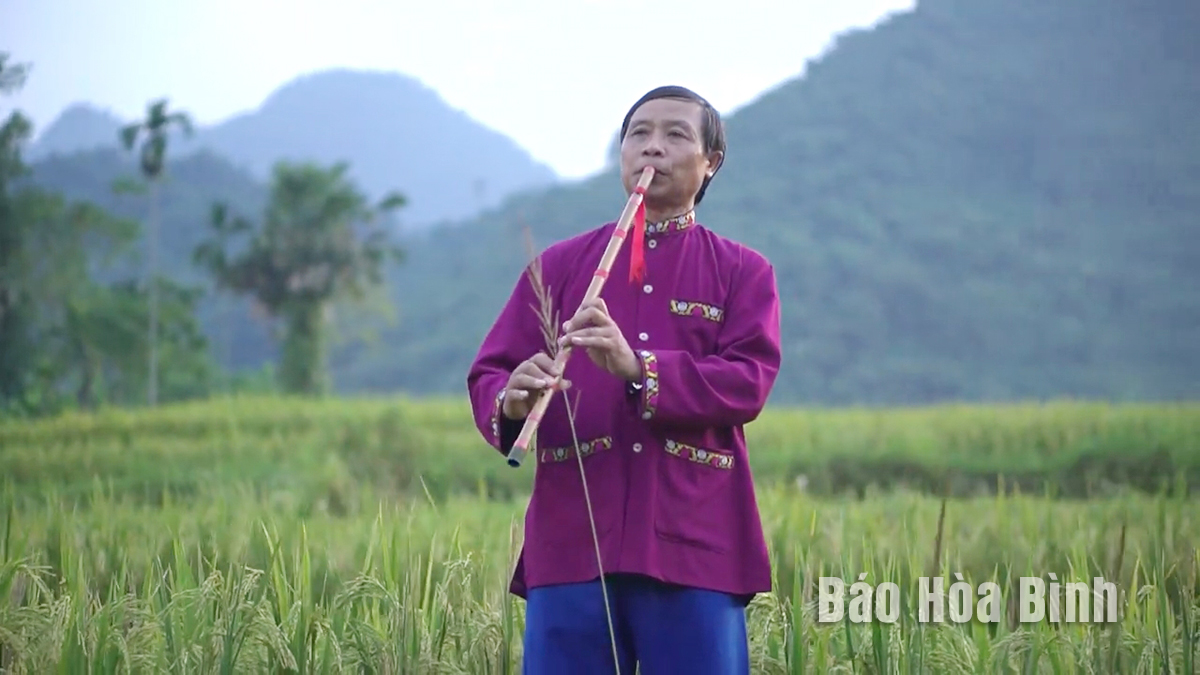
Sao oi (Muong flute), a unique traditional instrument of the Muong ethnic people, calls out the arrival of spring throughout the villages. Its pure and tender tones are reminiscent of the gentle spring breeze, carrying the thoughts and emotions of the highland people of the northwest.
Ha Xuan Trong, from Man Duc town, Tan Lac district, is captivated by melody of Muong flute.
During village gatherings, spring festivals and Tet celebrations, the Muong people often use the Mưong flute to accompany singing, especially lullabies, folk songs, and Muong folk songs.
The Muong flute, also known as "ống ôi" or "kháo ôi" by the Muong people, was ingeniously crafted by generations of skilled artisans, passed down from one generation to the next. Made primarily from bamboo, it has 4 finger holes and 5 musical notes: Ho - Su - Sang - Xe - Cong, and can produce high-pitched tones. Therefore, the sound of the Muong flute is simple and rustic, yet profound and gentle, with its own distinct nuances.
Unlike the bamboo flute, the Muong flute is suitable for Muong folk melodies. The Muong people's flute is likened to a call of love. While Hmong men use the "khèn” and "kèn lá” to express affection and win over girls, Muong men use the Muong flute to convey their feelings of love and affection. Its melodious sound travels from one end of the village to the other; in the forest, on the fields, it echoes from one place to another; by the rivers, streams, it resonates from one bank to the other. In the flute's melody, many words like "ôi" are used, such as ôi hỡi (my friend), ôi hày (oh dear), ôi hạ (oh dear), ôi hởi (oh dear), hỡi ôi (my dear) sounding intimate and sincere. The sound of the Muong flute seems to call out to loved ones, stirring the hearts of Muong girls. Its echoing tones are like expressions of affectionate confession, promises, vows, so deeply resonant! From those heartfelt sounds, the words "ôi" and "ơi" have paved the way for young couples to come together, innocently and passionately, yet filled with love and meaning.
Today, the Muong flute continues to be cherished, refined, and passed down through the skilled hands of Muong artisans across generations. Its resonant sound carries melodies and emotions, heralding the arrival of spring.
With an increasingly vibrant and widespread emulation movement aimed at building cultured residential areas and cultured families, Yen Thuy District has been making steady progress toward improving both the material and spiritual well-being of its people, while fostering a civilized, prosperous, beautiful, and progressive community.
Once lacking recreational spaces and community facilities, Residential Group 2 in Quynh Lam Ward (Hoa Binh City) has recently received attention for the construction of a new, spacious, and fully equipped cultural house. The project followed the model of state support combined with public contributions in both labor and funding.
The "All people unite to build cultural life" movement, which has been effectively integrated with Kim Boi district’s socio-economic development goals, is fostering a lively spirit of emulation across local residential areas, hamlets, villages, public agencies, and enterprises. In addition, through the initiative, traditional cultural values are being preserved and promoted, while community solidarity and mutual support in poverty reduction and economic development are being strengthened.
A working delegation of the Hoa Binh provincial People’s Committee led by its Permanent Vice Chairman Nguyen Van Toan on June 11 inspected the progress of a project to build the Mo Muong Cultural Heritage Conservation Space linked to tourism services in Hop Phong commune, Cao Phong district.
Born and growing in the heroic land of Muong Dong, Dinh Thi Kieu Dung, a resident in Bo town of Kim Boi district, in her childhood was nurtured by the sweet lullabies of her grandmother and mother. These melodies deeply imprinted on her soul, becoming an inseparable part of her love for her ethnic group's culture. For over 20 years, this love for her hometown has driven Dung to research, collect, and pass down the cultural values of the Muong people to future generations.
In the final days of May, the Ethnic Art Troupe of Hoa Binh Province organized performances to serve the people in remote, mountainous, and particularly disadvantaged areas within the province. These were not just ordinary artistic shows, but they were the meaningful journeys aimed at spreading cultural values, enhancing the spiritual life of the people and contributing to the preservation of ethnic minority cultural identities.



